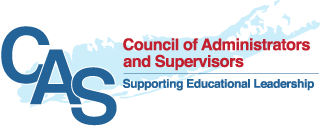
ESSAA recently released a position paper on the Common Core, Standardized Testing and APPR. Coincidentally, in this same month, back in 1983, the Lower Hudson Council of School Superintendents (LHC) issued a position paper in reaction to the then-recently-proposed Regents Action Plan. The LHC was chaired by Tom Sobol, the Superintendent of Scarsdale Schools and subsequent Commissioner of Education for New York State. The parallels between the two documents are very revealing.
“Our organization supports initiatives to raise standards and enhance student learning. We agree on the importance of rigor and higher learning standards to best prepare our students for 21st century college and career readiness.” (ESSAA 2015)
“Like the Regents, we believe that educational standards should be high and educational achievement should be improved.” (LHC 1983)
“The ‘top down’ implementation of the Common Core curriculum doomed its success from the beginning because the field level service providers and practitioners were intentionally ignored and replaced with financially invested voices.” (ESSAA 2015)
“The Plan attempts to achieve its effects chiefly through regulation, rather than through leadership….” (LHC 1983)
“The current system relies on an unproven statistical model that is not a fair and equitable one rooted in best practices that are supported by research and input from experts, stakeholders and practitioners.” (ESSAA 2015)
“The Plan lacks a credible base in educational research.” (LHC 1983)
“The implementation of new standards was rushed and lacked the necessary teacher/principal and parent input.” (ESSAA 2015)
“The timetables for achieving many of the Plan’s features are unrealistic.” (LHC 1983)
“The associated costs with Common Core implementation including training, staffing, curriculum materials and remediation for students who do not make the mark has put additional financial stress on district budgets….” (ESSAA 2015)
“The costs of implementing the Plan have not yet been calculated. No satisfactory proposal for funding the Plan has yet been made.” (LHC 1983)
“As a result, the tests have widened the achievement gap between the ‘haves’ and the ‘have nots’ as the scores of economically disadvantaged students plummeted.” (ESSAA 2015)
“The Plan sets requirements which are beyond reasonable limits for a significant number of students. As a result, their frustration level may rise and invite negative effects, such as an increase in the high school drop-out rate.” (LHC 1983)
“Learning mandates have not been differentiated to take into account a district’s current performances and achievement resulting in a ‘one size fits all’ approach.” (ESSAA 2015)
“The proposed examination requirements, taken as a whole, are too extensive. They place too much emphasis on those learning outcomes which are easily measured. The importance given them by the State will lead schools and teachers to slight important educational goals in favor of success on the tests.” (LHC 1983)
“As a result of schools striving to meet the new standards teachers are now teaching to the test and enrichment and creativity have been discouraged.” (ESSAA 2015)
“They [the tests required by the State] should not constrict teaching and learning by focusing narrowly on State-prescribed courses of study.” (LHC 1983)
“Unfortunately, we are still are no better off than we were before the influx of federal dollars. In fact, one might say, we are significantly worse off now than we were before/winning’ the Race to the Top!” (ESSAA 2015)
“Unhappily, we believe that the Regents’ Plan in its present form will not attain its intended results. Worse, we believe that, if enacted, it may well have the opposite effect.” (LHC 1983)
These attempts from the field to influence educational policy, spaced over thirty years apart, are a disheartening reminder that our voices as practitioners are often ignored at the highest decision-making levels. Or, put another way — the more things change, the more they stay the same!
Nonetheless, we cannot allow ourselves to become complacent. Our vigilance does operate as a check on ill-advised policy decisions and the lesson to take from this case study is that public school practitioners need to do more, not less, to state our perspectives on policy.
ESSAA actively and regularly brings the thoughts and suggestions of our membership to the State Education department as well as influential members of the state legislature — and that mission will not change.

PLEASE NOTE: This email was distributed via the email distribution list.
As a result, you are unable to reply directly to this message.
If you wish to edit your email address or unsubscribe, please click here.
11/17/2015 9:32 AM
http://www.essaa.org






